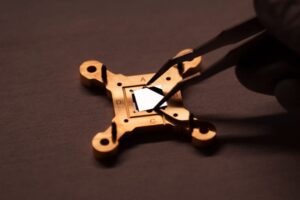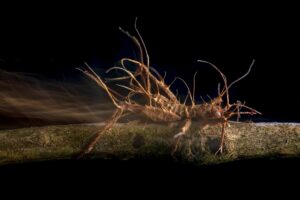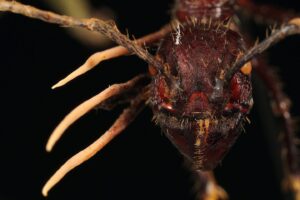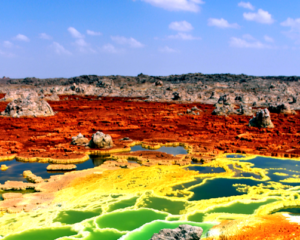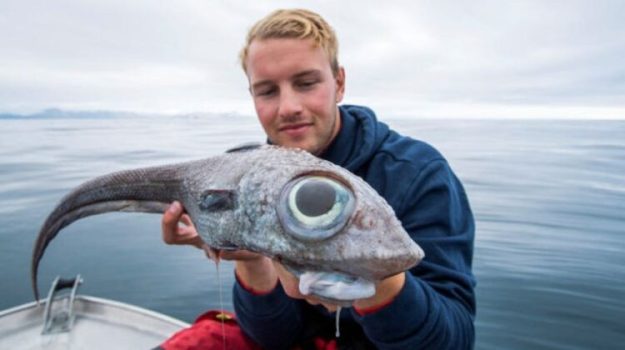 Pin
Pin After battling for half an hour against his fishing line, 19-year-old Oscar Lundahl finally hauled in something extraordinary off Norway’s Andoya coast—a bizarre creature sporting enormous bulging eyes and a tiny, compressed body.
(Image from hasanjasim.online)
The ocean floor feels like another planet—dark, cold, and crushing in its silence. Yet, life blooms in strange and surprising ways. Among the most curious creatures to call this world home is the mouse fish deep sea dweller. With its unusual shape, glowing features, and silent hunt for survival, it represents one of nature’s best-kept secrets.
In this article, we’ll take you through the world of this strange creature, not as scientists in a lab coat, but as curious travelers sharing stories over coffee. You’ll meet a fish that looks part-cartoon, part-nightmare, and you’ll see how it thrives in a place where most life should not exist at all.
Table of Contents
Life Where the Sun Never Shines
Think about standing in a place so dark that light has never touched it. That’s the deep sea. The mouse fish lives here, in a world far below the surface, where the pressure is bone-crushing and the cold is constant. To us, it might seem unlivable, but to the mouse fish, it’s home. This is where it has adapted over millions of years to survive in ways that would seem impossible on land.
Without sunlight, food chains work differently. Instead of depending on plants or surface life, deep-sea creatures often rely on “marine snow”—a soft drizzle of dead organisms and organic matter falling slowly from above. For the mouse fish, this eerie rain of nutrients is both a blessing and a limit. It must adapt to catch what little it can, often turning to clever hunting tactics or scavenging when food is scarce.
Life in this pitch-black ocean is about balance. One wrong move, one wasted burst of energy, and survival becomes difficult. The mouse fish has evolved not just a body to endure the pressure, but also instincts as sharp as any predator on land.
A Face Straight Out of a Storybook
At first glance, the mouse fish doesn’t look real. Its rounded head, small body, and whisker-like features give it an odd, almost cartoonish look. Some even say it looks like a mix between a tiny rodent and a fish—which is probably how it earned its name. In the deep sea, appearances can be deceiving, and this funny-looking creature has a serious purpose behind every feature.
Those whisker-like structures aren’t for decoration. They act like sensitive feelers, helping the fish sense movement in the water around it. Since light doesn’t reach the ocean’s abyss, eyesight alone isn’t enough to survive. Instead, the mouse fish depends on these delicate sensors to “see” through touch and vibration. To us, it might look like a funny face. To the fish, it’s a lifeline in the dark.
Its small size is another advantage. In an environment where food is scarce, being compact means needing less energy to survive. This isn’t a flaw—it’s a survival strategy. The mouse fish may look like a character drawn by nature’s imagination, but each trait tells a story of survival written over countless generations.
Masters of Silent Hunting
In the deep sea, hunting is more like a game of patience than a chase. The mouse fish has learned to move slowly, almost like a shadow drifting in the water. Quick movements waste energy, and in a place where food is rare, every bit of energy matters. This slow, deliberate pace makes the fish nearly invisible to unsuspecting prey.
Instead of relying on sight, the mouse fish uses its whisker-like feelers to sense vibrations. When a small shrimp or drifting creature comes close, it reacts in a sudden, precise strike. It’s a quiet hunter—no flashy speed, no long chases, just careful waiting and then a lightning-fast snap. In the deep sea, silence is survival.
This patient style of hunting also protects it from becoming prey. Larger predators lurk in the dark, and staying unnoticed is just as important as finding the next meal. For the mouse fish, every move is calculated—a perfect balance between risk and reward.
The Glow That Guides the Dark
One of the strangest and most beautiful features of many deep-sea creatures is their ability to glow. The mouse fish, too, carries this secret weapon. Through bioluminescence, it creates soft flashes of light in the endless darkness. These tiny sparks aren’t just for show—they serve as signals, lures, and even a form of camouflage.
Some scientists believe the glow helps attract prey, drawing smaller creatures toward what looks like a safe shimmer. Others think it’s a way to communicate—like flashing lanterns in the dark—to warn or attract mates. In a place where sound and sight are limited, light becomes the language of survival.
But bioluminescence isn’t always bright and dazzling. Sometimes, the glow is subtle, a faint shimmer that makes the fish blend in with the dim light drifting from above. This trick, called counter-illumination, hides the mouse fish from predators lurking below. In the deep sea, shining can mean survival, but shining wisely means living another day.
Built for the Pressure
The deep sea is not just dark—it’s crushing. At depths where the mouse fish lives, the pressure is so intense that it could flatten a human submarine if not properly designed. Yet, this tiny fish thrives there as if it were nothing more than a gentle swim in a pond. Its body tells the secret.
Unlike land creatures with rigid bones, the mouse fish has a softer, more flexible body structure. This lets it withstand enormous pressure without breaking apart. Its organs, too, are adapted to function in these extreme conditions, where oxygen is limited and temperatures are icy cold. Instead of fighting the environment, it has evolved to flow with it.
This resilience is a quiet reminder of how life adapts. While we think of the deep as hostile, the mouse fish has turned it into a home. What looks deadly to us is simply the backdrop of its everyday life—a world where strength isn’t about size or force but about adapting perfectly to the impossible.
A Diet of Patience and Precision
Food is the greatest challenge in the deep. For the mouse fish, every meal counts, and there’s no room for waste. Its diet is simple but smart—small crustaceans, drifting plankton, and bits of organic matter that fall like snow from the surface. When larger prey wanders close, it doesn’t miss the chance, but it rarely wastes energy chasing something it can’t catch.
What makes its feeding style fascinating is patience. It waits, still and quiet, letting prey drift into its reach. Then, with a sudden burst, it seizes the opportunity. This method may look lazy, but it’s a masterclass in energy conservation. In a place where meals can be days apart, clever hunting matters more than speed.
For us, it’s a reminder of life’s strange balance. The mouse fish survives not by being the strongest or the fastest, but by being wise with what it has. Down in the deep, survival isn’t about abundance—it’s about making the most of every tiny chance.
Predators in the Shadows
Even in the depths, danger is never far. The mouse fish may be a skilled hunter, but it is also prey. Larger deep-sea predators—like eels, squid, and bigger fish—are always searching for their next meal. In this silent battlefield, survival depends on staying unnoticed.
The mouse fish uses its size and subtle movements as its greatest defense. Blending into the dark waters, it avoids attention, while its bioluminescence can be used as both a lure and a distraction. Some scientists believe that quick flashes of light may confuse predators, buying the mouse fish precious seconds to escape.
It’s a reminder that in the deep, there’s no clear winner or loser—only balance. Every creature is both hunter and hunted, locked in a cycle that has kept this hidden world thriving for millions of years. For the mouse fish, survival means not just catching food but also staying off someone else’s menu.
A World Still Full of Mysteries
For all we know about the deep sea, there’s so much more we don’t. The mouse fish is one of those creatures that remind us how little of the ocean we’ve truly explored. Scientists estimate that more than 80% of the deep ocean remains unmapped, unseen, and unstudied. That means the mouse fish is just one thread in a massive web of life we’ve barely begun to understand.
Each new discovery often raises more questions than answers. How do these fish communicate? How long do they live? Do their glowing signals carry meanings we can’t yet decode? The more researchers uncover, the more the ocean feels like an alien world right beneath our feet.
This sense of mystery is part of the magic. The mouse fish is fascinating not just for what it shows us, but for what it hides. Its existence is proof that life thrives in places we once thought lifeless. And who knows—deeper still, there may be creatures stranger and more astonishing waiting for their turn to be found.
Why the Mouse Fish Matters to Us
At first, the mouse fish might seem far removed from our lives—it’s tiny, hidden in the depths, and rarely seen by human eyes. But its existence carries lessons that ripple back to the surface. For scientists, studying this fish helps unlock secrets about adaptation, survival, and how ecosystems function in extreme environments. Each detail gives us clues about evolution and resilience.
For the rest of us, the mouse fish is a quiet reminder that beauty and strength come in unexpected forms. It survives without power or speed, relying instead on patience, subtlety, and clever use of its abilities. In a way, it reflects the resilience humans admire—finding ways to endure even when the odds seem impossible.
By learning about creatures like the mouse fish, we also learn humility. The ocean’s hidden life reminds us that we’re just beginning to understand the planet we call home. Every discovery adds depth to the story of Earth, showing us that life doesn’t just survive—it adapts and flourishes in the most unlikely corners.
Tiny Creatures, Big Impact
Though small, the mouse fish plays an important role in the deep-sea ecosystem. Every creature, no matter the size, contributes to the balance of life down there. By feeding on plankton, tiny crustaceans, and organic particles, it helps recycle nutrients that keep other deep-sea creatures alive. In this way, the mouse fish quietly supports the whole web of life.
Its presence also tells researchers about the health of the environment. Changes in population or behavior can signal shifts in the ecosystem, like variations in food availability or temperature changes. In a world so far from human eyes, even the smallest fish becomes a vital indicator, reminding us that every life—tiny or enormous—matters in the bigger picture.
The mouse fish shows that influence doesn’t depend on size. In a realm dominated by darkness and pressure, it proves that survival, adaptation, and purpose can exist even in the smallest package.
Lessons from the Deep
The mouse fish deep sea teaches us more than biology—it teaches patience, adaptability, and quiet strength. Living in a world without light or warmth, it survives through clever strategies rather than brute force. Its life is a masterclass in balance, reminding us that thriving often comes from understanding your environment and using what you have wisely.
For us on land, the lessons are subtle but powerful. We see that even in the darkest, most challenging places, life can find a way. Small, seemingly insignificant beings can carry great wisdom, and resilience often comes from patience, precision, and adaptability. The mouse fish isn’t just a creature of curiosity—it’s a symbol of survival, ingenuity, and the endless wonders that hide beneath the waves.
FAQs
It uses whisker-like sensors to detect vibrations and subtle bioluminescence to navigate, hunt, and avoid predators.
Tiny crustaceans, drifting plankton, and falling organic matter—essentially the “marine snow” of the deep sea.
Bioluminescence lures prey, communicates, and camouflages it against faint light from above.
Its soft, flexible body and specially adapted organs withstand crushing pressure that would harm other creatures.
It reveals secrets about adaptation, survival, ecosystem health, and the hidden wonders of the deep ocean.














